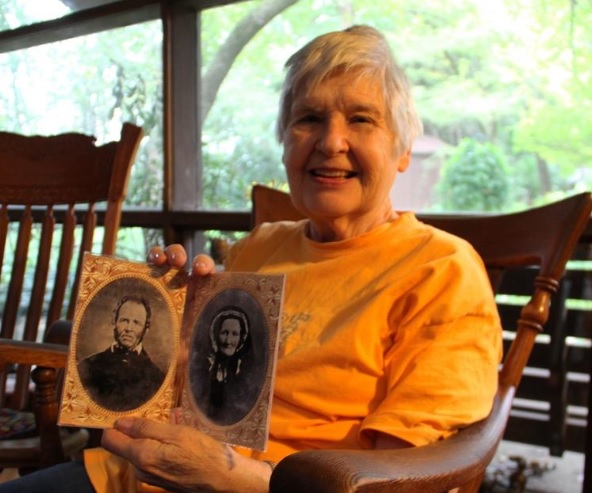“The barn of Deacon Jireh Platt at Mendon, Illinois, was a haven into which many slaves from Missouri were piloted by way of Quincy.”[1]
This is all that is said about the abolitionist Platt family in Wilbur Siebert’s The Underground Railroad: From Slavery to Freedom, published in 1898. Siebert’s book was the first academic work to focus on the history of the Underground Railroad, piecing together his interpretation from interviews and recollections mostly collected from aging, former abolitionist agents.
However, recently, Zona Platt Galle, the great-great granddaughter of Jireh and Sarah Platt, wanted to know more about her ancestors than what Siebert had provided. During a visit to the Kansas Museum of History in Topeka, she discovered that the Kansas Historical Society was home to five boxes of Platt family papers. At least one recollection within this collection revealed that during the 1840s, Jireh and Sarah hid a group of four escaped slaves, presumably from Missouri, on their farm for two weeks while fifty slave catchers intermittently searched their property. Galle states that “the slave hunters fired their guns, caused the chickens to squawk and even shouted death threats at the family, but eventually left empty handed.”[2] This amazing discovery now offers a fascinating modern addendum to Siebert’s groundbreaking work.mimig
When Siebert mentions large group escapes of enslaved people in The Underground Railroad (1898), he typically describes them as “companies.” The text does utilize the term stampede once, however, in a chapter on the impact of the Underground Railroad on the coming of Civil War. “The prospect of a stampede of slaves, in case [border states] should join the secession movement,” Siebert writes, “was a consideration that may be supposed to have had some weight in fixing the decision of border slave states. Certainly it was one to which Northern men attached considerable importance at the time in explaining the steadfast position of these states.”[3]
Like many newspaper comments from the period, Seibert seems much more focused on the significance of the term “stampede” as it relates to slaveholders and politicians rather than on what it might have meant to enslaved people themselves. In this case, Siebert implies that Northern Unionists employed the term as a scare tactic to try to help keep Upper South states in line during the winter of 1860-61.[4] However, even if the term “stampede” was mostly a political maneuver, mass escapes were very real. The largest mass escape of Missouri slaves that Siebert described was the December 1858 raid by John Brown that freed Jim Daniels and his family and resulted in the death of slaveholder David Cruse. Other than this “highly dramatic” event that “created great excitement throughout the country, especially in Missouri,” Siebert does not describe any other escapes, either individual or mass, that emanated out of Missouri.[5] According to the author, “the number of [Underground Railroad] lines was relatively not so great” in Missouri compared to states further east.[6]
The Underground Railroad (1898) was the first comprehensive, academic review of the efforts of slaves to escape their bondage and of abolitionist agents to help them find freedom in the North. As such, its value to this project is significant. Most importantly to this project, it reveals that even just three decades after the Civil War, the concept of stampedes was part of the story of the era.
[1] Wilbur Siebert, The Underground Railroad: From Slavery to Freedom (New York: The MacMillan Company, 1898), 63.
[2] (Patricia Middleton, “Tracing Abolitionist Ancestors,” The Kansan (Newton, KS), Sept 24, 2018. [WEB]
[3] Siebert, 355.
[4] Siebert, 354-355.
[5] Siebert, 162-163.
[6] Siebert, 135.

